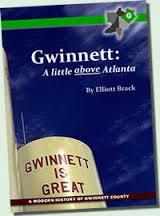“The basic idea is that insurers win when patients look sicker and get less health care….Insurers are able to add diagnoses…for which patients are receiving no treatment at all.”-— Christopher Weaver, Wall Street Journal.
By Jack Bernard, contributing columnist
PEACHTREE CITY, Ga. | Health insurance is very complicated. Very few Americans understand the difference between Medicaid, Medicare and Medicare Advantage. Indeed, Robert F. Kennedy Jr. showed his total lack of understanding when he appeared before Congress at his recent confirmation hearings. Medicaid was set up in 1965 to cover lower income people.
 Today’s column will address Medicare/Medicare Advantage, rather than Medicaid. Big companies are making outrageous profits. However, because it is so complex, this subject is not addressed very often. But that must change. Per single-payer advocacy group Physicians for a National Health Program (PNHP): “The federal government is losing as much as $140 billion per year by subsidizing private Medicare Advantage plans.”
Today’s column will address Medicare/Medicare Advantage, rather than Medicaid. Big companies are making outrageous profits. However, because it is so complex, this subject is not addressed very often. But that must change. Per single-payer advocacy group Physicians for a National Health Program (PNHP): “The federal government is losing as much as $140 billion per year by subsidizing private Medicare Advantage plans.”
Traditional Medicare, administered by the Federal government with only two percent overhead, provides health insurance coverage to U.S. citizens over 65 years of age. It was also passed as part of Lyndon Baines Johnson’s social program legislation in 1965. From its start, traditional Medicare has been one of our government’s most popular programs.
But in the 1970s, a variation to Medicare was established, entitled Medicare Part C. Commonly known as Medicare Advantage, these are private health insurance plans which are then paid by the federal government. The Medicare Modernization Act of 2003 was established during the Bush administration to encourage expansion of these private (mostly for-profit) insurance plans.
Medicare Advantage (MA) plans are heavily … and deceptively … advertised, which has caused them to flourish in the last few decades. Of the 70 million Americans on Medicare, half are now on MA. But the fact that MA plans are either Health Maintenance Organizations (HMO) or Preferred Provider Organizations (PPO) is never mentioned in the barrage of television, radio and social media ads. They ration care to create corporate profits. A 2018 Department of Health and Human Services report found that 18 percent of MA patient’s claims were wrongly denied by these for-profit insurance companies.
HMOs restrict patients to in-network health providers (doctors, hospitals, and the like); out of network care is billed 100 percent to the patient. PPOs also often have their own networks. But the patient has the choice of paying much more and using out-of-network providers. The adequacy of these networks has also come under scrutiny.
Does the Trump administration and Department of Government Efficiency (DOGE) really want to make a positive difference in our lives? DOGE could save Americans a tremendous amount of money by doing away with the Medicare Advantage program, enriching giant corporations like UnitedHealth Group, Humana, Cigna, and Blue Cross Blue Shield at taxpayer expense.
Instead, DOGE has attempted to abolish consumer friendly agencies like the CFPB, the aptly named Consumer Financial Protection Bureau, which has saved Americans billions by fighting for the common person rather than the giant corporations.
Ed Weisbart, MD, secretary of PNHP, has correctly stated: “Insurers are quietly plundering the Medicare trust fund for their own profits and compromising the health of senior citizens and [people with] disabilities.”
Therefore, phasing out Medicare Advantage would be a good start towards giving DOGE credibility. The bottom line for the Trump administration is: get your act together on health care. Or you will feel the wrath of the American public, both now and in 2026/2028.
- Have a comment? Click here to send an email.









Follow Us